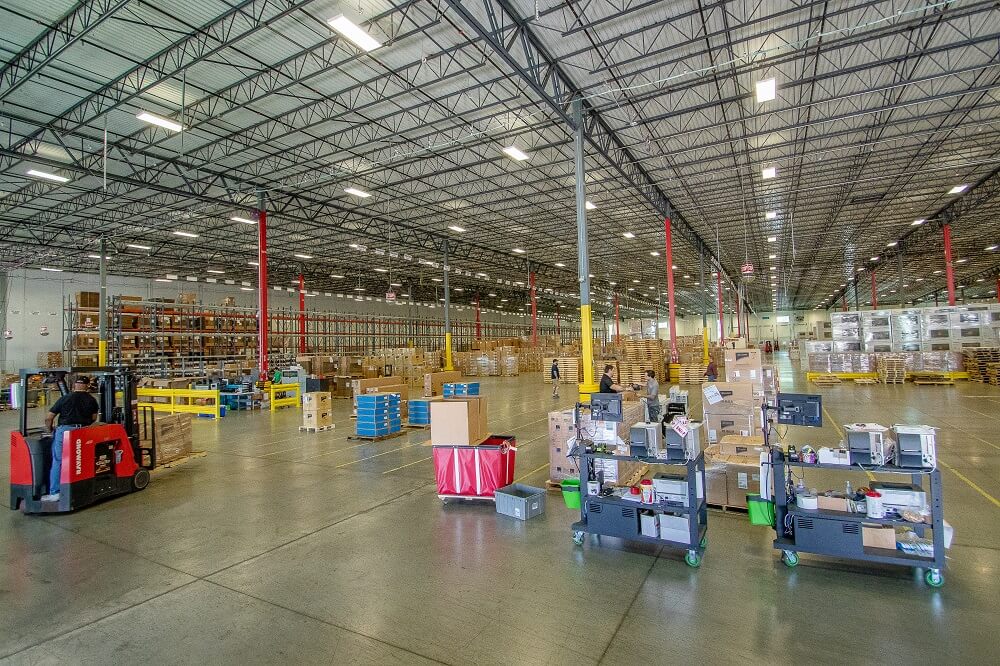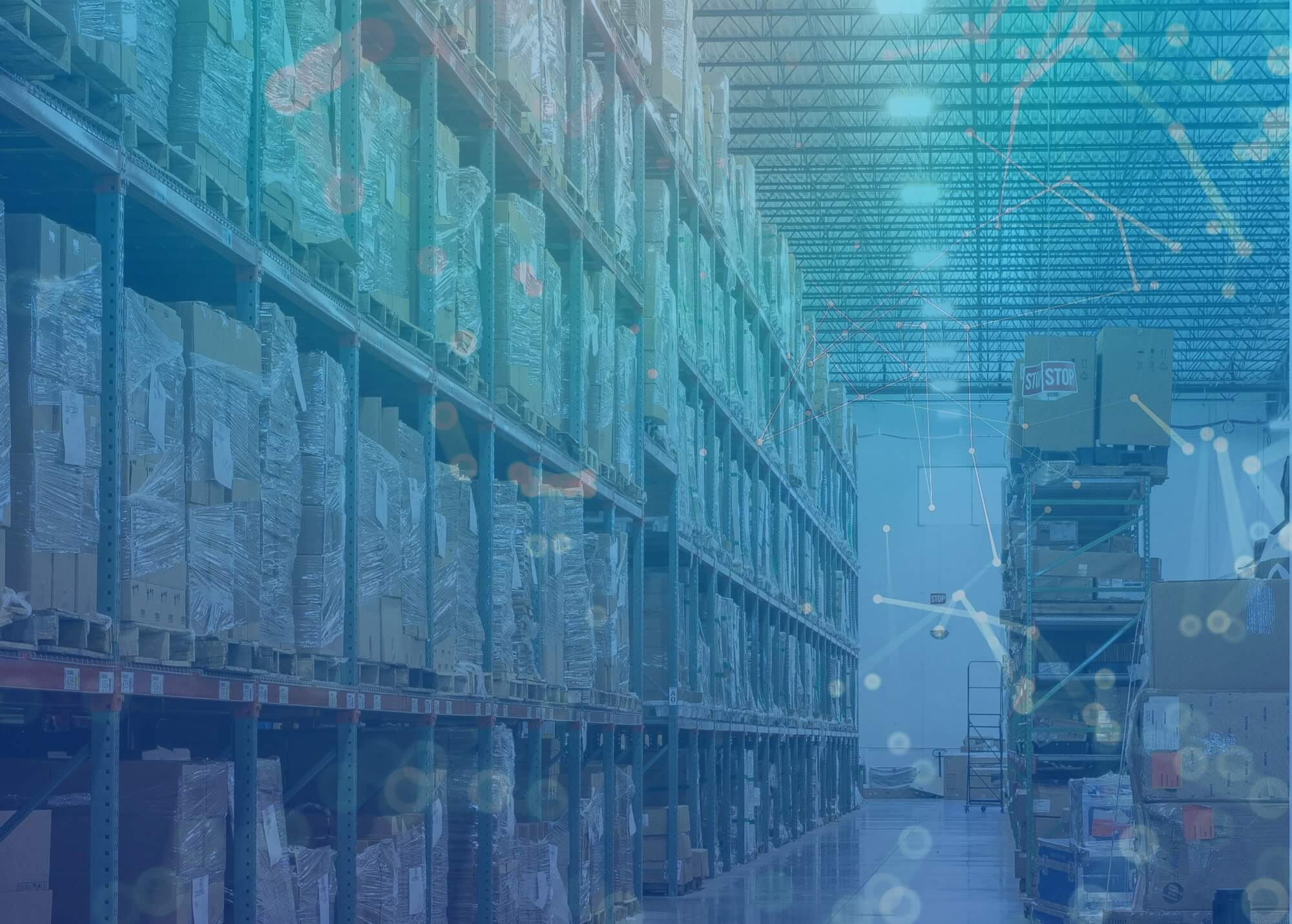Even the most well-designed and modernized logistics networks begin to show signs of aging and require upgrades over time. Changes in customer demands and market conditions — coupled with technology advancements and data analytics — can drive changes that elevate business efficiency. Industry 4.0 is one such response that has taken hold in many global manufacturing businesses. Responding rapidly to customer demands with data-driven manufacturing means lowering the cost of warehousing and providing a better customer experience through technology and modernization. However, the concept of Industry 4.0 presents additional challenges for supply chain businesses, accelerating the need for industry-wide changes.
As the world advances, shifts in technology and your business continue moving toward Industry 4.0 to make the supply chain and manufacturing process more efficient. By capitalizing on modernization opportunities, you can propel your business into using better technology to implement an on-demand order fulfillment system that meets customer needs, supports your supply chain more efficiently and aligns to the shift toward Supply Chain 4.0.
The Move Toward Supply Chain 4.0
By the end of 2021, the economy will likely be on its way to recovery, typical transactions will start taking place again and many businesses will begin to return to 2019 levels. At that point, it will become a massive race to get modernization and Industry 4.0 operations running, as they have been at a standstill for more than a year. This fourth industrial revolution will impact every domain with advanced technological capabilities, enabling manufacturers to become smarter in production, seamlessly adjust and communicate continuously.
Supply Chain 4.0 is the supply chain industry’s answer to Industry 4.0. The effort has the power to:
- Boost efficiency and productivity
- Improve agility and flexibility
- Increase profitability and sales
- Enhance the customer experience
- Streamline compliance processes
- Make businesses work faster and become more granular
- Provide timely and accurate information more easily
Modern technology, including artificial intelligence (AI), robotics and data analytics, are the foundational elements of Supply Chain 4.0. Additionally, with technologies such as blockchain and automation, you can benefit from modernizing invoicing and billing processes, as blockchain provides security and transparency for order processing, and automation reduces the chances of human error. Next-generation solutions brought by Industry 4.0 and Supply Chain 4.0 will help simplify the order-cancelation process and account management.
Although there will be a massive influx of original equipment manufacturers (OEMs) adopting these modern technologies, most organizations won’t be able to see a company-wide transformation until well after their first year of implementing Supply Chain 4.0. To get on the right path toward that transformation, it is essential to ensure your organization has the appropriate support around the balance of current business operations and the adoption of Supply Chain 4.0 based on the different impacts it will have on various business units. Understanding how modernization leads to better business outcomes can help build the case for business transformation and convince investors, boards of directors and company leadership that it’s necessary to get on board — and fast. For starters, Supply Chain 4.0 is expected to lower operational costs by 30 percent and decrease inventories and lost sales by 75 percent over the next two to three years.
Better Business Outcomes With Supply Chain 4.0 Modernization
Modernizing Customer Relationships Through On-Demand Order Fulfillment
Modernization presents challenges beyond those of upgrading systems and accelerating processes. Maintaining customer relationships during a period of modernization can place a significant burden on your teams, who must meet real-time customer demands while also working toward strategic initiatives. Through modernization, you can meet the needs of on-demand customers and smart manufacturing by implementing automated systems that improve transportation, warehousing and material handling; reduce the risk of mistakes; and increase accuracy levels.
To preserve their workforce and enable their teams to focus on business transformation goals, many OEMs seek partnerships with service providers who already have a wide-reaching logistics network, offer flexible supply chain models — such as 3PL, fulfillment and hybrid — and are experts in supply chain modernization. By working with an established supply chain partner, you can more easily simplify and streamline inventory management, services delivery and overall supply chain logistics to save your organization time, money and resources.
Making Data-Driven Decisions With Action-Based Insights
Another significant challenge organizations face when modernizing their supply chain is filtering out data and noncritical information. Supply chain management is dynamic, which means it is better suited for non-static data modeling processes. For instance, it may be difficult to determine which data sets are most relevant to the analytics process and how to distill that data quickly and accurately into meaningful and action-based insights. Poor modeling can result in poor data-driven decisions, which lead to poor outcomes. Great decision making is based on being able to interpret the best data points that are aligned to the current needs and demands of the customer as well as your organization’s future strategy.
Other data challenges within supply chain management include figuring out how data will be injected into the AI model, how inventory will be measured, how parts will be stored and what orders need to be shipped. It is considered a two-part challenge — knowing what needs to be retained and purging the rest.
Each business has unique objectives and service-level expectations, so working with a partner who has experience operating with various high-performance SLA and KPI requirements can help provide customized visibility into your supply chain. With access to a robust suite of reporting tools that analyze and interpret your data, you can more easily identify areas for optimization, better quality and cost reduction; improve lead time; and get ahead of potential shortages and quality issues. Additionally, appointing a partner to handle this supply chain data analysis also enables your teams to focus on bigger initiatives and make data-informed decisions.
Expanding Geographically With a Wide-Reaching Global Logistics Network
Modernization helps to enable expansion, and expansion is synonymous with growth, implying that you will have to think beyond your current geographical region if you want your business to grow. However, globalization can strain the supply chain process, whether you gain new customers worldwide or start manufacturing beyond your region. Several challenges may come with this shift, such as changing tax and tariff laws, customs agreements and customer demands.
By taking advantage of modernized global supply chain methods and a wide-reaching logistics network already in place with an established partner, you can quickly overcome these challenges and enjoy the benefits of globalization without incurring high costs for warehousing and staffing. Leveraging a partner’s global logistics network helps to shorten your time to market, reduce transportation costs and meet your customers’ needs in the timeliest, most cost-efficient manner — ultimately delivering a superior customer experience and improving your profit.
Secure Your Supply Chain 4.0 Modernization Partner
Modernization can be a challenging and complicated process for business transformation. But with the right supply chain management partner, you can ease the transformation process and support your supply chain more efficiently by modernizing customer relationships, making data-informed decisions and establishing or expanding your global footprint — all while reducing overhead costs. With flexible supply chain management services and a large global logistics network, Shyft Global Services provides technology companies around the world expertise in customer relationship management, invoicing and billing, inventory management and storage, transportation management, import and export management, warehousing and distribution, e-commerce solutions, supply chain logistics and much more.
Industry 4.0 is all about improving business efficiency and accommodating increasing customer demands, and Supply Chain 4.0 success starts with modernizing your supply chain logistics. Shyft’s logistics center network has been carefully planned to support the demand of its worldwide customers. Each logistics center runs on a common IT platform and shares processes, projects and KPIs with other centers in the network, which means the customer experience is consistent regardless of which center ships the product to the end user. And while these centers are a network, they also each have the capability to operate autonomously as part of Shfyt’s disaster recovery strategy, helping to ensure business continuity and a seamless customer experience.
One of these state-of-the-art centers is the 586,000 square-foot CenterPoint facility in Groveport, Ohio, which was built from the ground up with growth and partner enablement in mind. On top of the facility’s 400,000 square feet dedicated to logistics and supply chain management, the CenterPoint facility houses additional key service capabilities including repair, integration, field service support and more — making the facility home to the largest range of end-to-end product lifecycle service offerings in GLM.
About the Author
 Matt Smith serves as the Business Unit Specialist for Shyft’s supply chain management services offering and has been with Shyft since 2018. Matt has 18+ years of experience in the contract transportation and logistics business, focused on fostering relationships and implementing programs that have solved a wide array of global customer challenges. He is responsible for Shyft’s supply chain business development functions across the Americas, EMEA and Asia-Pacific regions to drive profitable revenue streams as well as solutions designs that support global technology companies.
Matt Smith serves as the Business Unit Specialist for Shyft’s supply chain management services offering and has been with Shyft since 2018. Matt has 18+ years of experience in the contract transportation and logistics business, focused on fostering relationships and implementing programs that have solved a wide array of global customer challenges. He is responsible for Shyft’s supply chain business development functions across the Americas, EMEA and Asia-Pacific regions to drive profitable revenue streams as well as solutions designs that support global technology companies.






